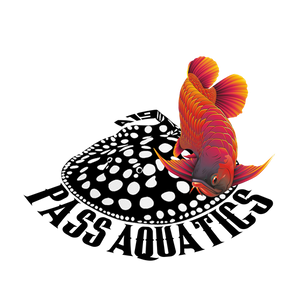
Pickup available at PASS Aquatics
Usually ready in 4 hours
Rainbow Popondetta furcata
-
PASS Aquatics
Pickup available, usually ready in 4 hours22 John Street
Aberdeen AB25 1BT
United Kingdom+441224820402
Pseudomugil signifier
Note: Due
to variations within species, your item may not look identical to the image
provided
|
Synonyms |
Atherina signata, Atherinosoma jamesonii,
|
|
Distribution |
Australia |
|
Sexual Dimorphism |
Mature males are more brightly coloured and
|
|
Maximum Size |
4.0-7.5cm (1.6-3.0") depending on origin -
|
|
Temperature |
23-27 deg C (73-81 deg F) |
|
Water Parameters |
pH: 6.5-7.5, dH: up to 15 degrees. |
|
Compatibility |
Community |
|
Lighting |
No special requirements |
Care
The Pacific Blue Eye has a wide area of distribution along
the east coast of Australia, from the Cape York Peninsula in northern
Queensland, southwards to Ulladulla in New South Wales, along with populations
on some of the offshore islands in the Torres Strait. It is found in a wide
variety of habitats from clear forest streams and swamps to brackish mangrove
estuaries. As might be expected from such a large geographical range, there are
thought to be up to 15 variants of this species, showing marked differences in
colour, pattern, and size depending on original collection location. These
diminutive fish make wonderful additions to the small-medium planted aquarium
housing other petite, peaceful species, or even showcased as a single species
shoal in a high end aquascape. The tank should be mature and have areas of
dense vegetation, including some floating species, along with several tangles
of driftwood (the spindly Sumatra wood is ideal) to help diffuse the light.
Dark background and substrate choices will help to bring out the colours of
these active fish. Filtration should be efficient, and the water
well-oxygenated, but the flow should not be too strong. Always maintain Pacific
Blue Eyes in groups of 10 or more specimens, ideally with one or two females to
every male. Not only will this make the fish less nervous, but it will also
result in a more effective, natural-looking display. Male fish will put on
quite a show as they compete with one another for female attention, but no real
damage should ensue during such sparring sessions. Tankmates should be small
and peaceable and enjoy the same water conditions, e.g. some of the smaller
goby or catfish species, other small rainbowfish, and many diminutive
cyprinids; small bottom-dwelling gobies or catfish working particularly well as
the Pacific Blue Eyes tend to occupy the middle to upper levels of the
aquarium. Avoid keeping alongside slow-moving fish that have long trailing
fins, such as gouramis, as they may be nipped at. Much care must be taken when
acclimatising this species to the home aquarium, as they can be very sensitive
to changes in water chemistry and temperature. Similar care should be taken
when carrying out frequent partial water changes.
Feeding
Flake, micropellets, and small frozen foods such as
daphnia, baby brineshrimp (Artemia nauplii), cyclops etc.
Breeding
A separate breeding aquarium should be set up, with plenty
of Java Moss (Taxiphyllum barbieri)/floating plants with long, trailing roots/spawning
mops and the temperature set towards the upper end of the preferred range.
Morning sunshine often triggers this species into spawning, and after an
elaborate courtship dance from the male, the female/s will scatter eggs over
the plants/mops. These fish are known as 'continuous spawners' which means that
the eggs are deposited over a period of some days/weeks. The eggs, which are
relatively large, should be removed to another tank (with matching water
conditions) after each spawning, as otherwise the hungry parents will consume
them. Each batch of eggs becomes progressively smaller. The eggs usually hatch
within 14-21 days, the timescale being very dependent on water temperature. The
fry should be offered infusoria and powdered fry foods, moving on to baby
brineshrimp (Artemia nauplii) as they grow. Frequent partial water changes
should be carried out with the utmost of care, as the fry are extremely
sensitive to changes in their environment.
